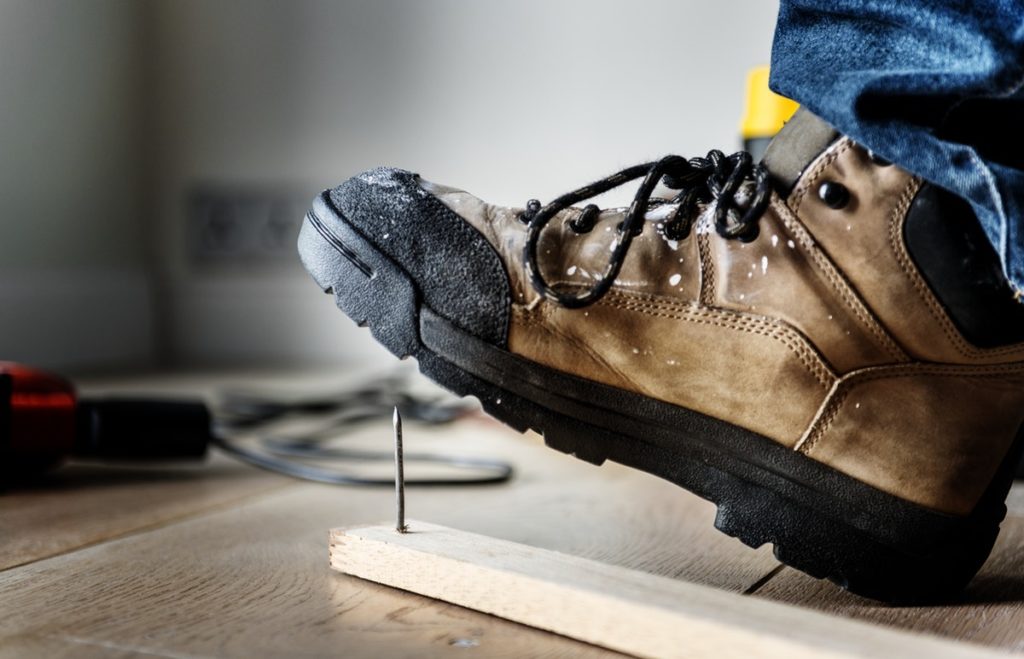When you think of workplace safety, you probably think about accidents, injuries and fatalities. However, reporting and investigating near misses can be just as important as actual workplace accidents.

You might be tempted to ignore near misses, but it’s vital that you don’t just brush them off. Just because it was a near miss this time, doesn’t mean it will be the next time. A near miss should be treated as warning of an accident in the making and an opportunity to assess your hazard control measures. By acknowledging the warning and looking for the near miss’s causes, you can prevent the situation recurring. Near misses can also help expose less obvious hazards in your workplace.
We explain what a near miss is, why you need to address them when they happen, and how they can be used to prevent full-blown accidents occurring.
What exactly is a 'near miss'?
The Health and Safety Executive (HSE) defines a near miss as “an event that, while not causing harm, has the potential to cause injury or ill health”.
Why do near misses not lead to potential harm? In most cases, nothing but sheer luck!
In plain English, a near miss is a “close call” that didn’t harm anyone but could’ve. In other words, near misses are incidents in which someone might have been hurt if the circumstances had only been slightly different.
However, deciding whether incidents had the “potential” to harm depends on your viewpoint and can be tricky. Every time most of us pour boiling water, we know there’s potential to scald ourselves. On the other hand, a less aware drill operator might assume that, despite having a dull drill bit slip several times, their skill leaves no chance of a harmful incident.
What’s more, too broad a definition of near misses, along with organisational demands that all near misses be reported, can lead to safety systems that don’t work. Incident investigators can become overwhelmed by reports of people almost slipping, tripping or bumping their heads, and sorting out situations in which you can act to prevent future accidents, from those where you can’t, can become impossible. At the same time, narrowing the definition to incidents that could’ve caused serious injury or illness, and excluding incidents where the result could’ve only been trivial, means you may miss out on the value of investigating the near miss.
Try not to get too hung up on the definition ‘near miss’. To investigate the right sort of near miss incidents, you should be guided by your risk assessments, as well as using a little common sense. This should help you to choose which near misses you want reported and investigated and which you can reasonably ignore.
Examples of a near miss
Some examples of near misses you might encounter in the workplace include:
- An office worker trips on the loose edge of upturned floor tiling that they couldn’t see because of poor lighting. They manage to steady themselves by grabbing a filing cabinet.
- A customer in a busy restaurant spills their drink on the floor. A waiter who hasn’t seen the spill slips but manages to steady themselves on the customer’s table.
- A warehouse worker is walking down an aisle. Tall racking on either side obscures their visibility of oncoming traffic at the end of the aisle. The worker steps out from the aisle end, not noticing an oncoming forklift, but manages to jump back out of the way before a collision occurs.
Why is it important to report a near miss?

In the above examples, the workers managed to avoid harm. However, they could easily have been seriously injured if they had not been able to steady themselves or get out of the way in time. It must be remembered near misses are warnings that something isn’t working and that they enable you to learn lessons before a serious incident occurs. As such, it’s important that they are reported so that you can deal with the hazard before anyone does get hurt.
Your employees might be tempted to write off a near miss as a “funny, no harm, no foul” situation or simply be too embarrassed to report it. The HSE estimates that there are around 90 near misses for every accident that occurs at work. With this in mind, if you wait for that accident to occur before taking steps to prevent it, you are taking a reactive approach to workplace safety, when you should be taking proactive measures to keep risk to a minimum.
Be proactive by actively encouraging your employees to report near misses. Use the information gleaned from these ‘almost’ incidents to review your risk assessments and control measures. In so doing, you can prevent accidents before they occur. Implementing a near miss reporting system will also:
Encourage employee participation in health and safety matters. This is essential in creating a successful safety management system. It will also help to demonstrate that you are invested in your workers’ safety and promote a positive safety culture within your organisation.
Motivate employees to contribute to their safety and the safety of others in a responsible manner.
Ensure you have enough data to measure performance. This will allow you to measure the success of your current control measures, as well as identify trends and faults within the system and introduce more effective controls.
Help to prevent similar incidents from occurring. In doing so, you reduce the chances of an injury, fatality and/or damage to property.
How to report a near miss
It is everyone’s responsibility to report a near miss. Create a reporting policy and procedure and make sure everyone understands the process. It’s vital that you and your managers all enforce and support the reporting procedure.
When employees report a near miss incident, it’s important to record:
- The incident date and time.
- Where the incident occurred.
- What work activities were being carried out.
- The type of incident.
- Details of what happened.
- The affected person(s)’s personal details.
Avoid naming people who may have contributed to the near miss.
Dangerous occurrences
In addition to internal reporting, near misses classed as “dangerous occurrences” must be reported to the HSE under the Reporting of Injuries, Diseases and Dangerous Occurrences Regulations (RIDDOR) 2013. The HSE encourages internal recording and investigation of “non-reportable near misses”.

Dangerous occurrences that must be reported include instances involving pressure vessels, lifting equipment and explosives. The full list of reportable dangerous occurrences can be found in Schedule 2 of RIDDOR. To understand more about what to report under RIDDOR, have a look at Ellis Whittam’s RIDDOR blog:
A near miss has been reported – what happens now?
Whenever a near miss is reported, you should investigate it to determine its root cause and make sure that adequate control measures are in place to prevent it recurring.
Questions to ask include:
What was the problem?
Why did it happen?
What can be done to prevent similar incident occurring in future?
Managers should, at periodic intervals, report the number and types of near misses that have been reported. This information should be collated and a report produced for review. By interpreting trends coming from these reports, you can assess your health and safety performance. From there, you will be in position to put in place more effective control measures or introduce initiatives and campaigns to raise awareness and reduce the likelihood of future trends/accidents.
Top tips for an effective near-miss reporting procedure
Managers must reinforce a culture that promotes identifying and reporting hazards, and then take action. The system needs to be non-disciplinary; in other words, avoid a ‘blame game’.
- Increase worker engagement by making the process simple.
- Consider allowing anonymous reporting in a bid to encourage employees to submit near-miss reports and ensure accurate and reliable data.
- Look into using incentives that encourage reporting.
Employees should be trained on how to properly identify and recognise potential hazards. Consider incorporating this into your health and safety induction.
Celebrate the success of your near miss reporting process with employees so that they appreciate the value of reporting seemingly ‘trivial’ incidents.
Remember, if near misses aren’t reported, you won’t know of and learn from failings in your health and safety controls. Monitoring and acting on these incidents is a simple and effective way to improve your overall health and safety performance on a daily basis and create a safer environment for all.
Ellis Whittam: One of your legally-required competent persons
Keeping on top of your health and safety responsibilities can be a daunting task. Without the right support, it can be difficult to know where to start and easy to miss the mark, putting your staff at risk of harm and your organisation at risk of financial and reputational damage. At Ellis Whittam, we support thousands of UK employers with their health and safety compliance, giving them the confidence that their premises and practices are safe and meet all relevant laws and regulations.








